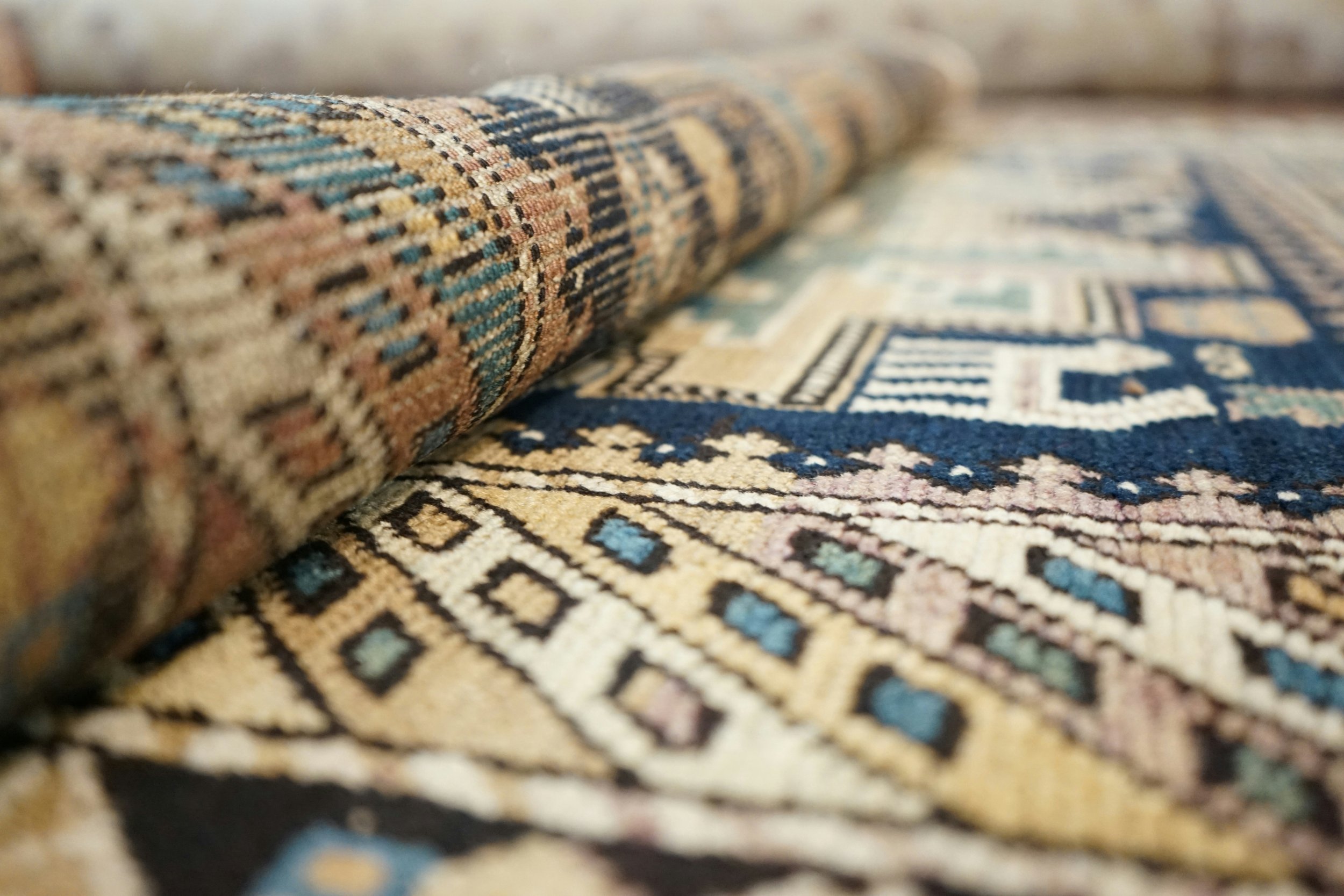Understanding the Rug Repair Process
Discover the rug repair process with this step-by-step guide, from assessment to care, ensuring your rugs stay beautiful and last longer.
Over time, even the highest-quality rugs can suffer from wear and tear. Whether it’s frayed edges, holes, or color fading, understanding the rug repair process is crucial for restoring your rug to its original condition. This guide will walk you through the essential steps of rug repair, helping you make informed decisions about preserving your treasured pieces.
Identifying the Damage
The first step in the rug repair process is thoroughly assessing the damage. A professional rug repair specialist will examine your rug to determine the extent of the wear and tear. They’ll look for common issues like fraying edges, holes, and color fading, as well as more subtle signs of damage that might not be immediately obvious. The type of material your rug is made from — whether it’s wool, silk, or synthetic fibers — will also play a significant role in how it’s repaired.
Common Rug Repair Techniques
Reweaving
Reweaving is often necessary when rug sections have become worn or damaged. This process involves carefully reconstructing the rug’s original weave to restore its appearance. Reweaving is a delicate task that requires a skilled hand, especially when dealing with intricate patterns.
Fringe Repair and Replacement
The fringe of a rug isn’t just decorative—it’s an integral part of the rug’s structure. Over time, fringe can become worn or detached, compromising the rug’s overall stability. Repairing or replacing fringe is a common task in rug repair, and it’s essential for maintaining the rug’s shape and longevity.
Color Restoration
Exposure to sunlight, spills, and everyday wear can cause your rug's colors to fade. Color restoration techniques, including dyeing and color correction, can bring back the rug’s original vibrancy. This process requires careful dye matching to the rug’s original colors to ensure a seamless repair.
Patch Repair
In cases where a section of the rug is too damaged to repair through reweaving, patching may be necessary. This involves replacing the damaged area with a matching piece of material. A well-done patch repair should blend in so well that it’s nearly invisible.
The Cleaning Process
Before any repair work begins, the rug must be thoroughly cleaned. Cleaning removes dirt, dust, and debris that can interfere with the repair process. It also helps to reveal any hidden damage that may not be visible at first glance. A professional rug cleaning Alpharetta company will use specialized methods to ensure the rug is clean without causing any further damage.
Cost Factors in Rug Repair
The cost of rug repair can vary widely depending on several factors:
Type of Damage: Simple repairs like fringe replacement will generally cost less than more complex tasks like reweaving.
Rug Size: Larger rugs require more time and materials to repair, which can increase the cost.
Material: The type of material your rug is made from will also affect the price.
On average, minor repairs can cost anywhere from $100 to $300, while more extensive work can run into the thousands. Getting an estimate from a professional before proceeding with any repairs is always a good idea.
Choosing the Right Rug Repair Professional
Selecting the right rug cleaning Atlanta company is crucial to properly restoring your rug. Look for someone with experience and expertise in working with the type of rug you have. It’s also important to ask questions about their process, such as how they assess damage and what techniques they use. If you want to get more insight into the quality of their work, you can read the reviews and testimonials from previous customers.
Post-Repair Care and Maintenance
After your rug has been repaired, proper care is essential to extend its life. Here are a few tips you should take to heart if you want to maintain the looks and condition of your rug:
Rotate Your Rug: Rotating your rug every few months helps distribute wear evenly.
Vacuum Regularly: Use a vacuum cleaner with adjustable settings to avoid pulling on the fringe or delicate areas.
Schedule Inspections: Have a professional inspect your rug periodically to catch any new damage early.
Why is It Important to Understand the Repair Process?
Understanding the rug repair process is essential because it lets you make an informed decision about the best option for restoring your rug's appearance. You’ll know the different techniques for repairing a rug and when they should be used, allowing you to avoid costly and unnecessary repairs or replacements.
Do you have a rug that needs repairing or restoring? Contact S&S Rug Cleaners, the trusted company that provides premier rug repair Atlanta residents have used for years. Check out their website to learn more!




